Hammered by illegal trafficking: The plight of Capped Langurs in Bangladesh
Hammered by illegal trafficking: The plight of Capped Langurs in Bangladesh
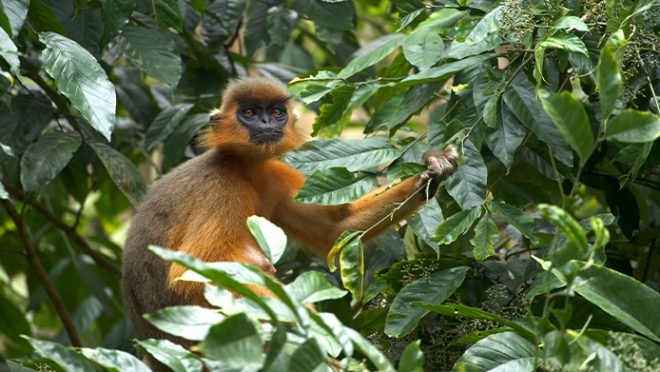
Immediate actions such as enhanced enforcement of wildlife protection laws, coupled with increased public awareness and international cooperation, are urgently needed to halt the illicit trade of the Capped Langur
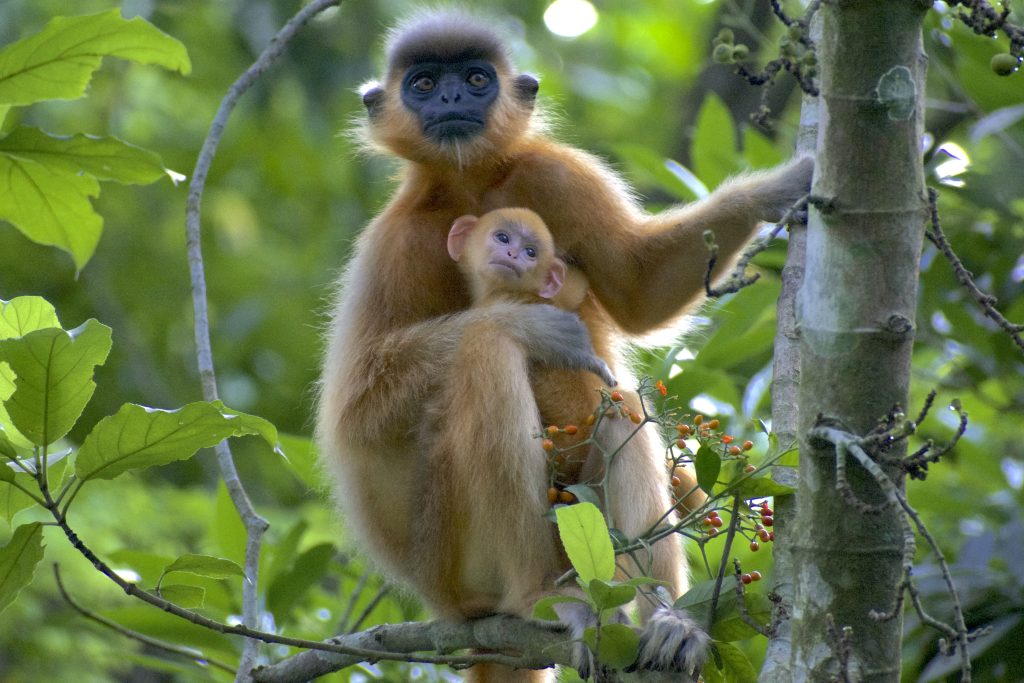
In recent times, 30 Capped Langurs were seized from illegal traffickers. There is no confident estimates on how many of these threatened animals live in our forests. Photo: Rasel Debbarma
The Capped Langur is a resilient primate, adapted to make the most out of the least.
From the fragments of sal forests in central Bangladesh, patches of mixed evergreens of northeastern Bangladesh to the remaining virgin stands of the Hill Tracts, Capped Langurs are omnipresent. Each time I ventured into these forests in search of carnivores, I was greeted by the sight of langurs swinging through the trees.
Their distinctive black caps, rusty red coats, and vibrant activities brought the forest’s hidden life into view, hinting at a bustling world often unseen by most. I never thought of them perishing any time soon.
But I was wrong. Recent surges in illegal wildlife trafficking have cast a perilous shadow over the Capped Langurs’ survival, threatening to decimate its already dwindling and disjointed populations at an alarming rate.
The October event
On 25 October, the first in a series of langur seizures occurred. Four langurs were rescued in a joint drive by the Wildlife Crime Control Unit, Forest Department and the Shah Ali Police Station. In a destitute apartment in Mirpur, two of these ill-fated animals were packed into a plastic sack, two were put inside a rusty metal cage — all being prepared for smuggling into India.
One juvenile, still not weaned, was found deceased — a victim of heat, cramping, and stress. The rest were quickly put into care and quarantine, and were released. An arrest was made during the operation. The arrestee disclosed to The Business Standard that these animals were to be transported to Chuadanga, where some other unnamed person would oversee their smuggling to India.
“Animals from the Hill Tracts are acquired from different sources at Alikadam upazila,” he further informed. This heartbreaking event stirred ire among the community. However, it was largely dismissed as an isolated incident.
But it was not.
The November event
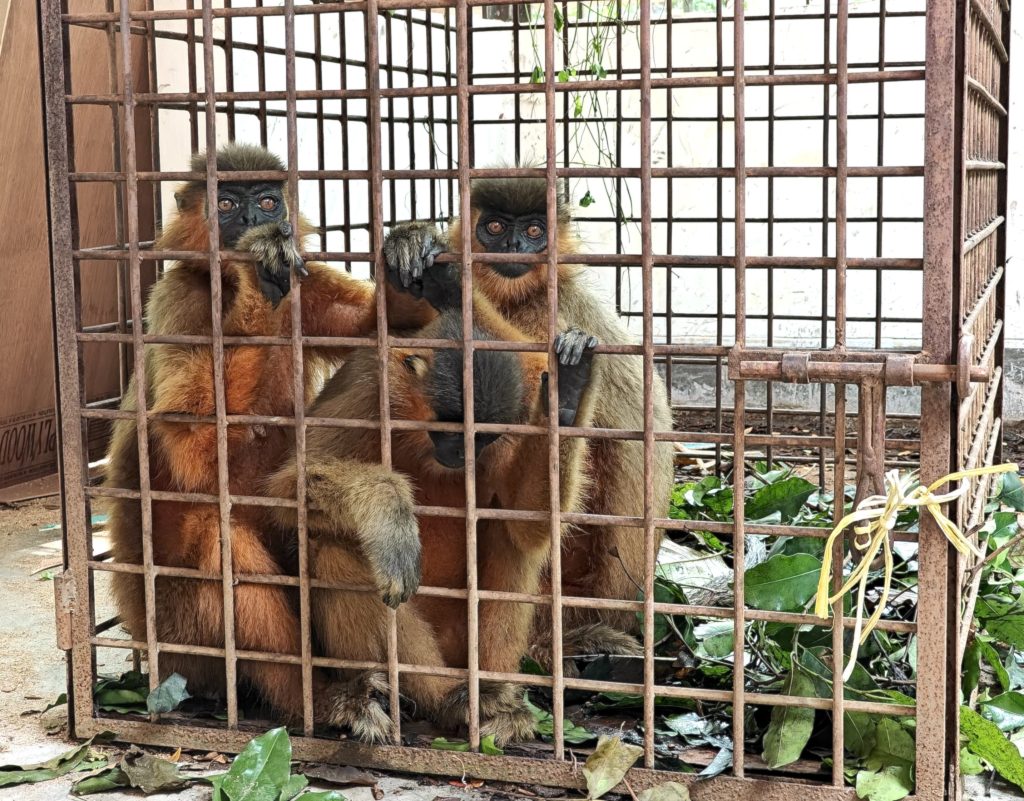
Three specimens were rescued from Mirpur last October by the Wildlife Crime Control Unit. PHOTO: ABDULLAH AS SADIQUE
The next incident occurred at Maheshkhali, the country’s only mountainous island, home to an isolated population of threatened monkeys and langurs. On 7 November, about two weeks after the Mirpur seizure, officials from the Maheshkhali Range of the Forest Department rescued five adults and seven juveniles from an abandoned hut in Bariapara village, Shaplapur union, allegedly owned by a local politician.
According to the Forest Department, these langurs were trapped on Maheshkhali and were being stockpiled for trafficking. Unfortunately, no arrests could be made during this operation. But the rescued langurs were successfully released on-site.
The December event
The third seizure occurred at a border checkpoint, about a month after the Maheshkhali incident, on 4 December. Personnel from the Border Guard Bangladesh confiscated six langurs, found abandoned in a cage near Satani, a locality close to the Baikari border in Satkhira District.
The operation, led by the BGB 33rd Battalion, was informed by undisclosed intelligence. They stated that the langurs were destined for India. The fate of these langurs was not reported.
The January event
The latest incident in the series occurred last week. On 9 January, eight langurs were rescued from a truck stopped on Kajla Bridge, a major gateway into Dhaka city, by the Wildlife Crime Control Unit.
“These animals were captured in Chattogram and were en-route to Kustia,” unit personnel informed the press. Two offenders were prosecuted, each receiving a Tk1,2000 fine and 21 days behind bars. Subsequently, the langurs were sent to the safari park for quarantine.
An ominous pattern
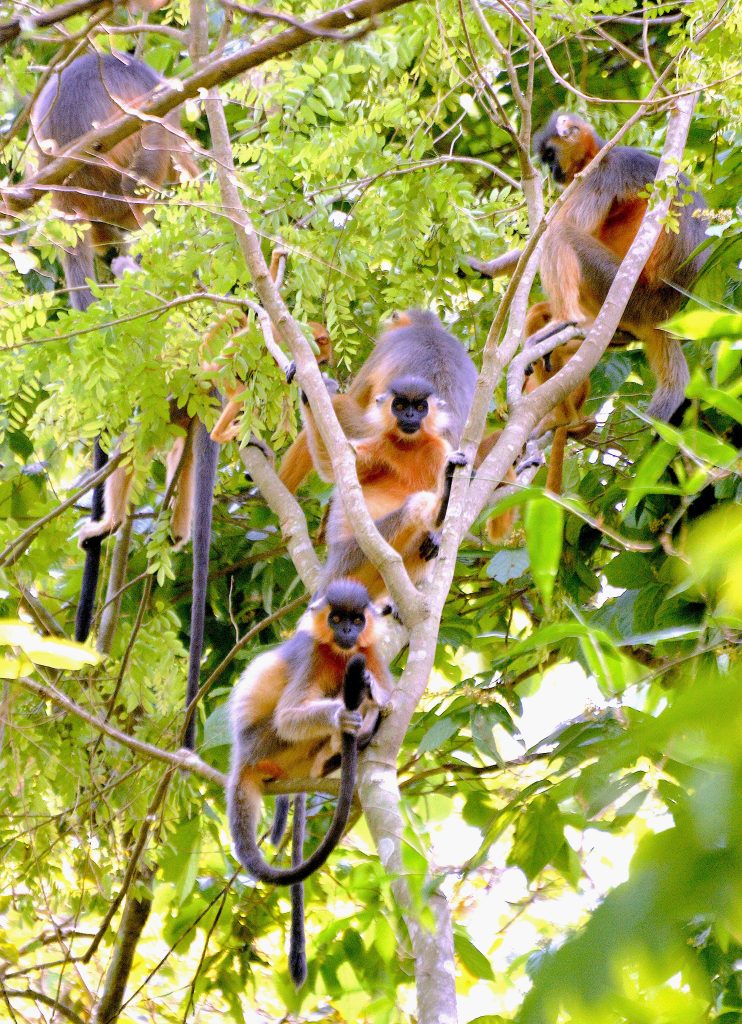
The Capped Langur is a globally vulnerable species. PHOTO: TANVIR AHMED
Since last October, 30 langurs have been seized in various parts of Bangladesh, all destined for the northwestern border regions. This pattern underscores a growing and alarming trend in wildlife trafficking.
This series of incidents not only highlights the vulnerability of the Capped Langur populations but also raises two critical questions: How many langurs have traffickers managed to smuggle past security networks? How many langurs remain in our forests, particularly in degraded areas like Madhupur and Maheshkhali where conservation investment is lax?
These questions point to a more systemic issue within regional wildlife conservation efforts. Despite the diligent efforts of local authorities and conservationists, the repeated instances of illegal trafficking suggest that current measures are insufficient and that a possibly large number of these illegal activities remain undetected.
Drivers of trafficking
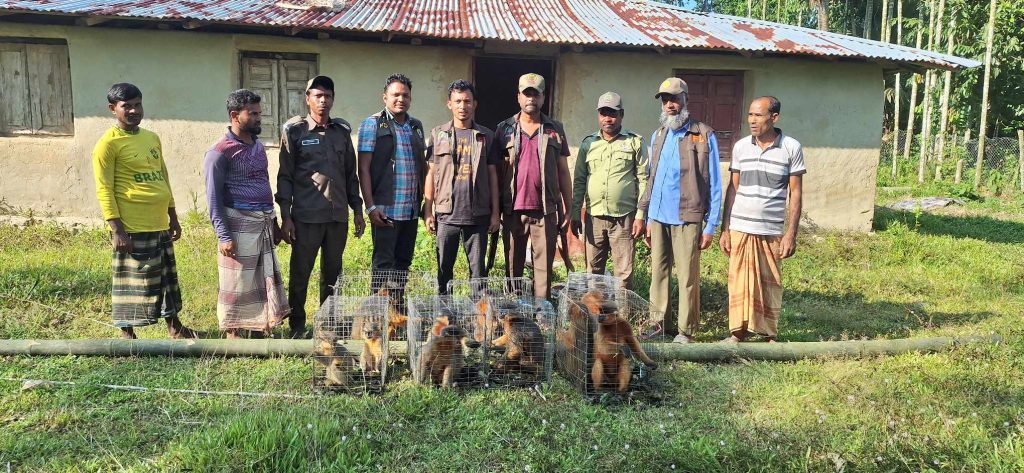
Rescued langurs from Maheshkhali, found in an abandoned hut where they were stockpiled for trafficking. PHOTO: NUR ALAM
Bangladesh is evolving and diversifying its tastes in exotic pets, encompassing both legal and illegal markets. The illicit demand for these exotic animals, combined with misguided beliefs in the medicinal value of wildlife parts, drives much of the trafficking.
The lure of economic incentives understandably attracts impoverished locals to the lucrative illegal wildlife trade.
However, there are more sinister layers to the recent surge. Bangladesh has long been considered a transition hub for wildlife trafficking, serving as a critical point in the international smuggling routes that funnel wildlife across continents.
And my colleagues, home and abroad, have repeatedly stressed that the establishment of a ‘rescue centre’ at a petro-complex in Gujarat, owned by the Ambani conglomerate, has complicated the situation further, and likely boosted the illegal wildlife trade market. This centre, ostensibly for rescue, may instead shield nefarious activities.
My first suspicion arose during my latest research on bears. The West Bengal Customs confiscated two black bear cubs and told the press that the cubs were sourced from the Hill Tracts in Bangladesh, and they were to be sent to western India.
In March 2024, the Himal Southasian published a detailed report on the suspicious activities happening at the ‘rescue centre’ and how it is bleeding biodiversity of India and adjacent regions, and has completely reversed the trade routes as trade hubs. The recent surges in langur trade are extremely unprecedented and must be linked to the newly hyped market demand.
Although highly adaptive, Capped Langurs are globally vulnerable. Its trade is prohibited by the CITES. The Wildlife (Conservation and Security) Act, 2012, also provides legal protection to the species.
Immediate actions such as enhanced enforcement of wildlife protection laws, coupled with increased public awareness and international cooperation, are urgently needed to halt this illicit trade, as it also endangers our commitment to CITES.
The plight of the Capped Langur is a poignant reminder of the broader challenges facing wildlife conservation in Bangladesh. This adaptive species does not require much: Keep the forest intact, and the langurs will flourish. Now, the emerging threat requires a concerted effort from all sectors of society — government, NGOs, communities, and international partners — to ensure that future generations can also marvel at langurs swinging freely through the forests and that they need not visit any rescue centre to watch them.
This call to action is not just a plea but a necessary demand for the survival of the Capped Langur and the integrity of biodiversity in Bangladesh.


